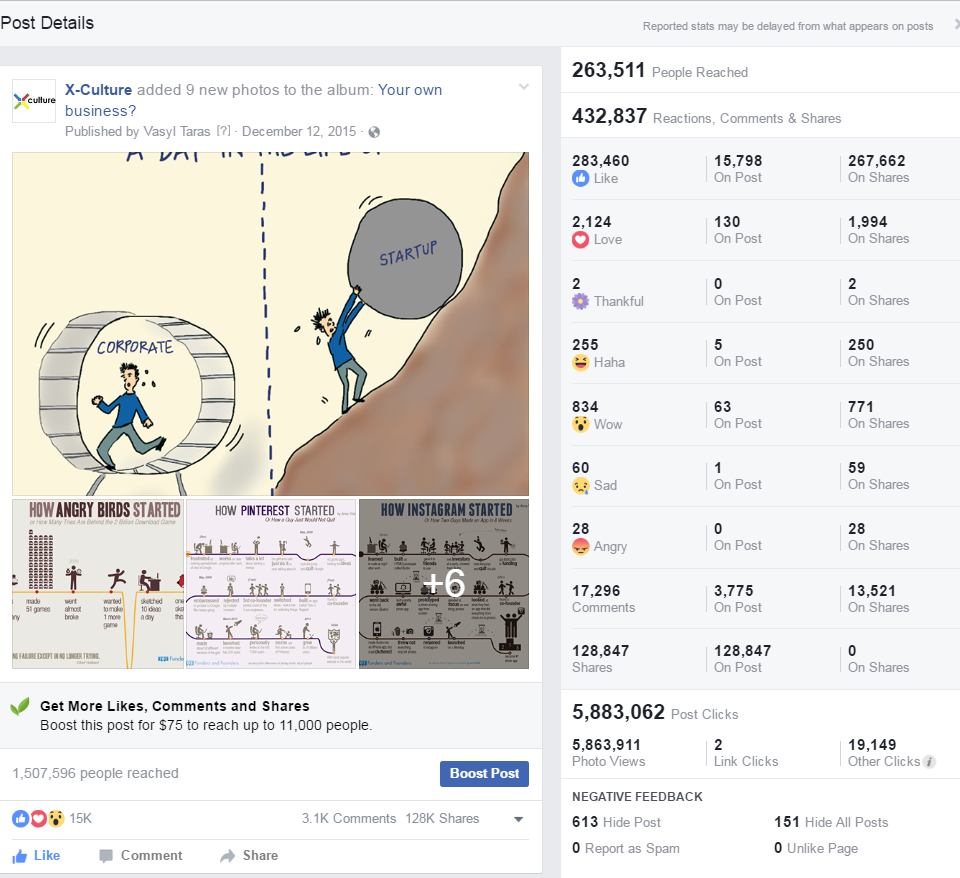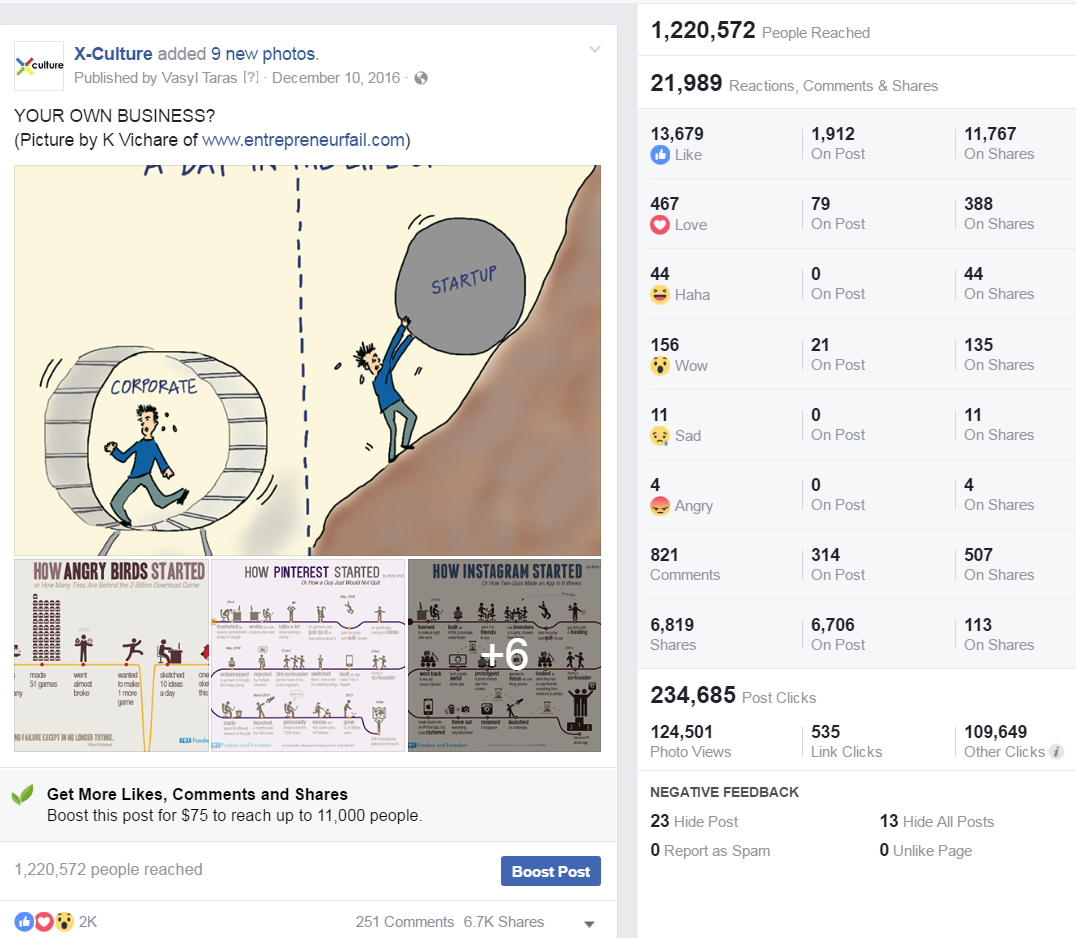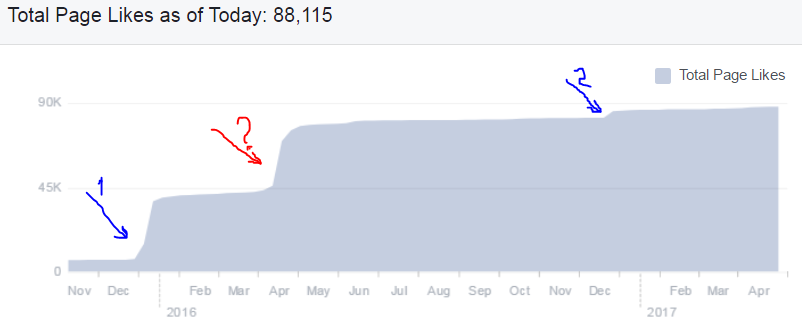
You can’t step in the same (Facebook) River Twice
Following up on my earlier post on X-Culture’s experiences with Facebook (10 Things I’ve Learned About Facebook), here is another lesson we learned through trial and error.
As noted earlier, some of our posts turned out to be widely popular. The first major hit was a series of Entrepreneurfail.com cartoons posted on December 12, 2015. In a matter of days, the post has been seen by a million people, liked and shared thousands of times.
The post statistics as of today is provided below:
Within a few days, it reached about half a million people, got 10K shares, 200 comments, and 5K reactions (as of today, it has over 1.5 Million views, 1kL reactions, and 128K shares). Most important, following this post, in a matter of about 2 weeks, we added 40K followers. Strangely, the number of views and shares of the post dramatically increased since then, but only those first hundreds of thousands of views translated into tends of thousands of new page followings.
Anyway, intrigued by the results, I decided to experiment with sharing the same post on the same day a year later.
So in 2016, also on the second Saturday of December, precisely at 8:41 pm, I posted exactly the same series of pictures. It was not a “share” of the old post, but the exact replica created from scratch.
Initially, the statistics looked the same. The post reached a few hundred thousand of people within the first few days. It generated thousands of likes and shares. In fact, the second time, the reach and reactions were accumulating even faster than the first time. Though the rapid growth stopped even more abruptly than the first time. And while the “people reached” and “likes” were very high the second time, the number of shares was noticeably lower in 2016.
HOWEVER, this time, the likes and reactions did not translate into new page followers. People saw, people liked, people shared, but this time, we got only 4K new followers, compared to 40K in 2015. Only one tenth of the results seen in 2015.
Interestingly, we’ve had two times when we added about 40K of new followers in a matter of weeks: in December 2015 as described here, and then again in March 2016. What is puzzling that in March 2016 there was even no super popular post. There were a few that got more likes than usual, but nothing that would justify +40K of the followers. In contrast, in December 2016, we had this widely popular re-post, but added only 4K of the new followers.
On the diagram below, you can see the increase in the number of followers during December of 2015 (1) vs. the replication of the experiment in December 2016 (2), plus a mystery surge in March of 2016 (?).
I have two possible explanations for these strange differences:
- Facebook is changing its algorithm all the time. The algorithm in 2015 was different from 2016, hence a different result.
- Facebook creates fake followers. 2015 was the time when Facebook started actively experimenting with paid/sponsored posts. Every time I post something, Facebook would show it to 2-5K of our 80K+ followers and then bombards me with offers to show my post to another 10K of my followers for $75 (the actual numbers and prices are different each time). It is possible that the number of our followers was artificially inflated to induce a release of dopamine in my brain and form an addictive habit (see “Hooked: How to Build Habit-Forming Products” by Nir Eyal for a detailed explanation of how these tricks work and the psychology and biology behind them).
Any other explanations?
What’s your experience with Facebook?
TO BE CONTINUED
Next time I will share with you the result of my experiments into what kind of posts generate the most likes and shares.
By Vas Taras
Become an X-Culture Blogger and submit your X-Culture related observations, stories, suggestions





Heightened competition. The amount of effort spent to gain people’s attention is unbelievable. See The Attention Merchants.